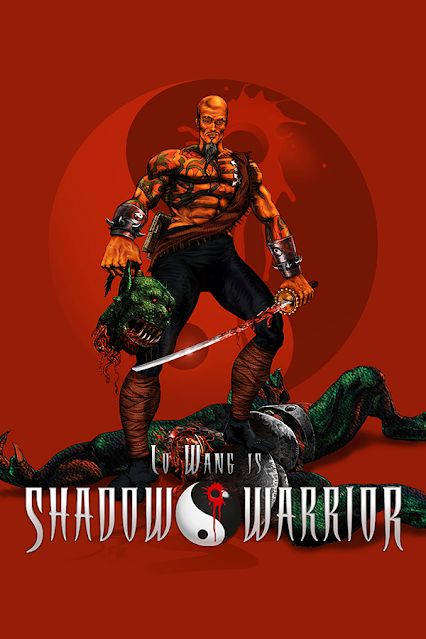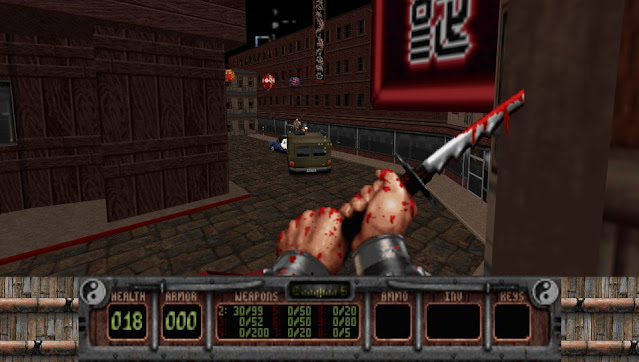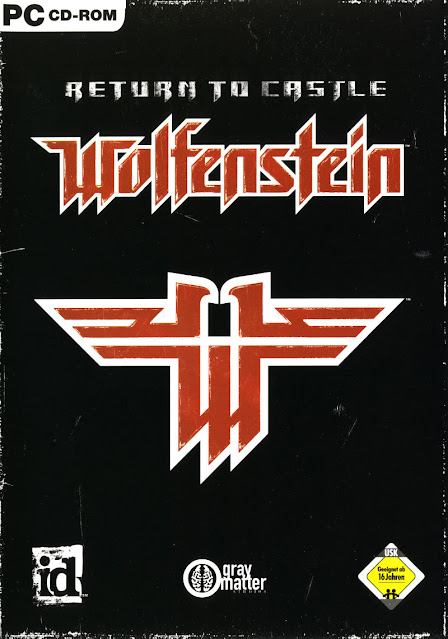 Shadow Warrior was a 'cousin' of sorts to Duke Nukem 3D in so far as it was another 3D Realms Build Engine powered FPS game with a wisecracking protagonist. Lo Wang was every bit the 80's/90's misogynistic action hero Duke was but never achieved the status Duke
had. That said the Shadow Warrior franchise continues to this year when
in March a second sequel of the rebooted franchise released while the
Duke was put on ice after the legendarily delayed and
phenomenally shit Duke Nukem Forever released in 2011.
Shadow Warrior was a 'cousin' of sorts to Duke Nukem 3D in so far as it was another 3D Realms Build Engine powered FPS game with a wisecracking protagonist. Lo Wang was every bit the 80's/90's misogynistic action hero Duke was but never achieved the status Duke
had. That said the Shadow Warrior franchise continues to this year when
in March a second sequel of the rebooted franchise released while the
Duke was put on ice after the legendarily delayed and
phenomenally shit Duke Nukem Forever released in 2011.The setting of the original game in 1997 was near future Japan and Lo Wang was the ninja employed by the Zilla corporation to protect its interests. However after Zilla began to wrest power from organised crime and dabble in supernatural forces, honour-bound Lo Wang took it upon himself to single-handedly bring down the corporation with a hilariously mismatched arsenal of both silent and high-explosive weaponry. In honour of it's 25th Anniversary, I said before the year was out I'd
crank up Shadow Warrior for a few hours and just give myself a little
injection of nostalgia.
Shadow Warrior, Duke Nukem 3D, Blood and Redneck Rampage to name but a few shared one of the more ubiquitous game engines of the mid to late 1990's, the Build engine. It's considered more a 2.5D engine as geometry is two-dimensional with added height and renders the world in a way that only seems three-dimensional, unlike modern engines that create actual 3D environments. Enemies and pickups are 3D voxels and simply animated unlike 3D characters. By the time Shadow Warrior actually released, Id Software had a year earlier brought the first true 3D FPS engine to the market with Quake and Build was woefully outdated by comparison. However Quake was only one game, whereas it would take developers a few years to master the true 3D environment, Build developers released fun games like Shadow Warror to fill the gap. Unfortunately when you're in a Build engine game today after playing modern engines for the past 25 years, one notices that the perspective tricks that Build used to project a 3D environment sadly don't work visually and can be disconcerting.
The game itself, while obviously a DOS game, benefits from the likes of DOSBox or other modern implementations to get it working on today's systems, and the results were satisfactory. I initially loaded the GOG Shadow Warrior Classic version as it's free. Sadly it restricted me to a low resolution using half the monitor and with no ability to change the controls to WASD/Mouselook, the FPS control system of today. Thankfully however there is a simple solution to this, VoidSW a DukeNukem Sourceport also supports Shadow Warrior and with it enabled I soon had a DirectX version of Shadow Warrior running at native 21:9 resolution with rebind-able controls.
An average play-through of Shadow Warrior would take about 14 hours, time which I knew I couldn't spend but I played enough to remember the good old days where games like this took less time to develop and would run great new even older hardware. Shadow Warrior benefited from the developers comfortability with Build after Duke Nukem 3D and it showed though the superior level design taking it to the max. In the couple of hours I did play I only encountered some of the game's basic enemies and collected about half of the weapons in Lo Wang's arsenal. I forgot how ridiculous the level of gore was although it was comically rendered, it left little to the imagination and tremendously excited myself at the time.
Final Verdict: Shadow Warrior is a minor classic but very much a product of it's time. I think it's harder to play and look at today than DOOM is due to the way it forces the 3D perspective to create more realistically shaped environments. The action however is loud, fast and littered with the protagonist's wisecracks and one liners as enemies explode with blood.It was fun for a couple of hours but it's highly unlikely I'll be trying it out again, as with Duke Nukem 3D, I'm happy with the memories I have.
Technicals: 2 hours approx playtime using a Nvidia 3070Ti @ 3440x1440 @ 175Hz with max settings on Windows 11. Windows HDR does not enhance.
Bugs: The standard version of Shadow Warrior does not have modern resolutions nor has options for adjusting keybinding. The VoidSW component of the Eduke32 sourceport however fixes both issues flawlessly..
Shadow Warrior Classic is available from GOG for FREE as in 2016 a Shadow Warrior Classic Redux version was made available for sale on both GOG and Steam.
Franchise Timeline:
Shadow Warrior [1997]
- Shadow Warrior: Twin Dragon [1998]
- Shadow Warrior: Wanton Destruction [2005]
Shadow Warrior [2013]
Shadow Warrior 2 [2016]
- Shadow Warrior Classic Redux [2016]
Shadow Warrior 3 [2022]







